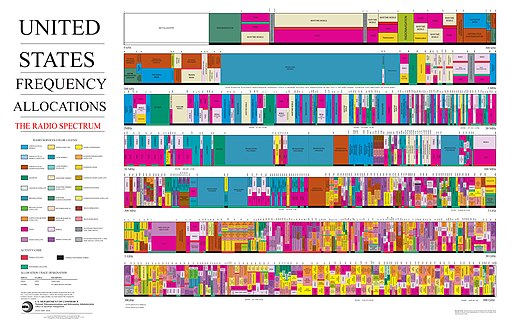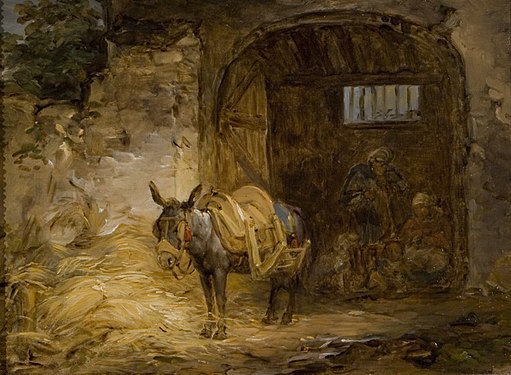Coloring Within the Lines

This image of an outdated January 2016 Spectrum Wall Chart from the NTIA is only useful as an overview of just how tightly packed bandwidth allocation is in parts of the spectrum, based on the jumble of colors. For a better view, download a PDF (Portable Document Format) of the chart from the NTIA website, though even then it can be a strain on the eyes without higher magnification.
This inter agency squabble isn’t even necessary, it turns out, because if the FCC and American mobile phone companies followed the European model for ensuring minimal interference with weather satellites, they would simply add greater restrictions to the transmitting power of 5G antennas in the higher bandwidths and rely more extensively on mid-range bandwidths that are not only better for 5G transmission, but also safely removed from the vicinity of crucial weather data transmissions.
A May 2019 news report from Sky News in London, England.
There will be a World Radiocommunication Conference in Egypt in October and November, where attendees will set international standards for 5G. Considering the attitudes and policies of the current presidential administration, the American delegation will probably resist the European model and go its own incautious way in order to serve the interests of the major telecommunications companies. It’s possible the American model may turn out fine eventually, but considering the drawbacks of being wrong, wouldn’t it be prudent to heed the concerns of weather forecasters, at least until more field testing proves without a doubt the safety of using the 24GHz band of the spectrum? To satisfy the greed of telecommunications executives and the desire of some smartphone users for faster loading Facebook feeds, is it worth having a hurricane drop in on us unexpectedly? A real hurricane, that is, not one drawn with crayons, however neatly.
— Techly 


